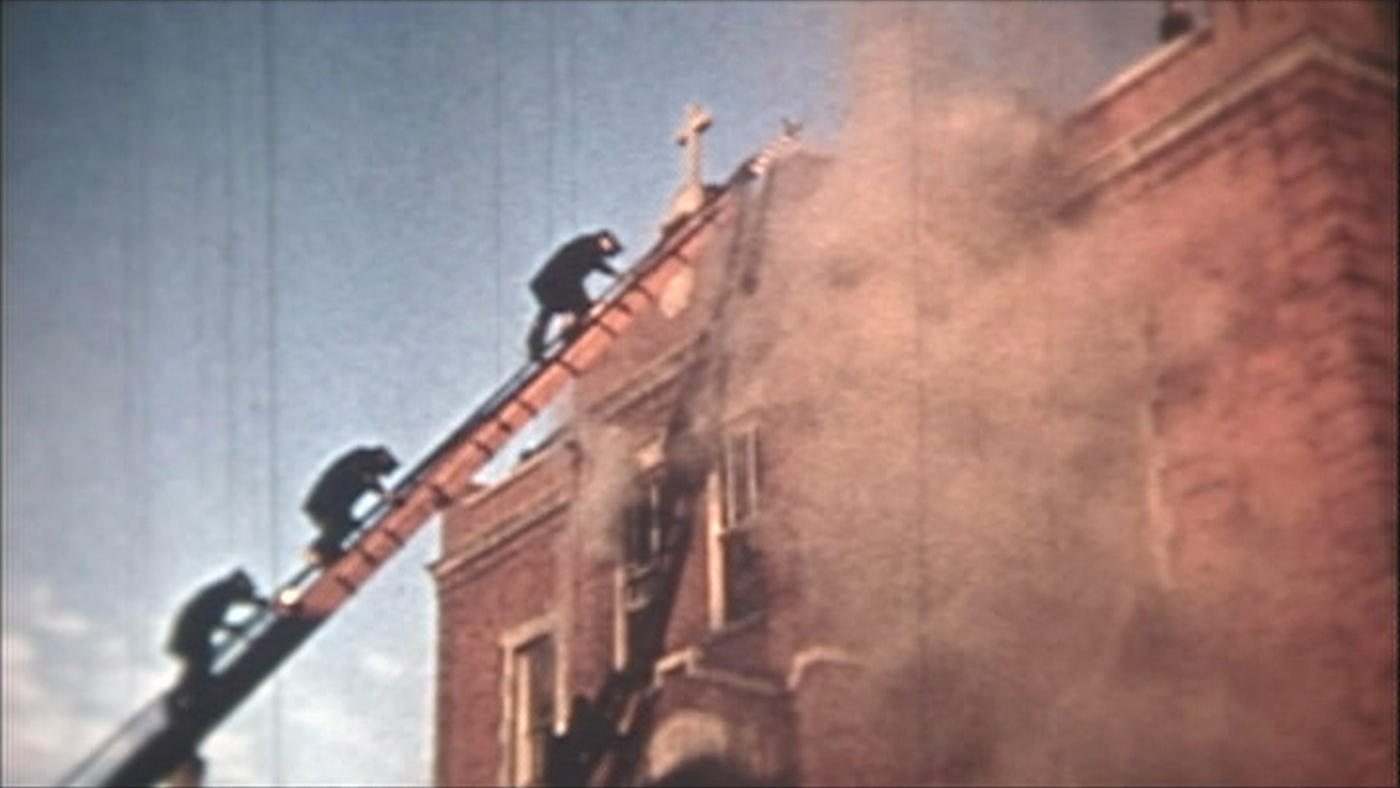Angels Too Soon: The Tragic Our Lady of the Angels School Fire
Daniel Hautzinger
November 29, 2018

It was a bright, frigid Monday, the first day back at school after the Thanksgiving holiday. Like kids everywhere, the young students at Our Lady of the Angels on the West Side of Chicago were eager to get home and play as the school day neared its end. But that December 1, 1958, it was not a carefree afternoon but tragedy that awaited.
As nuns taught their classrooms of 60-odd children that afternoon, the smell of smoke began to permeate the second floor of the school. The heat suddenly increased, and black smoke billowed through the transoms above the classroom doors. When nuns opened the doors to see what was happening, they were confronted by fire raging through the hallway.
Escape seemed impossible. One Sister hurried toward the locked door leading to the school’s only fire escape and grasped for the keys at her waist – but found she had forgotten them in her convent that day. Others led their students in prayer and gathered them near the windows to breathe in the smokeless outside air. The children looked down towards the concrete pavement, two and half stories below them, and weighed their options. Many of them were calling for their mothers. Some decided to jump. “If I was going to get out of there, I had to do it on my own,” one later recalled.
One entire classroom – the one led by the nun who had forgotten her keys – did escape, as a priest and the school janitor, Jim Raymond, whose son was in another classroom on the second floor, dashed into the room and grabbed kids, pulling them downstairs and outside to safety. Parents and neighbors had gathered outside the school, while firefighters tried to put out the blaze and climb ladders to rescue children through the crowded windows. Clouds of smoke poured into the sky. Kids were rushed to the hospital. Finally, the fire was extinguished.
Ninety-two children and three nuns died in the Our Lady of the Angels fire. Numerous other children who had jumped from the windows suffered broken and fractured bones and severe burns. There was no psychological counselling; many survivors were urged not to talk about it.
As people grasped for answers as to why this tragedy had occurred, scapegoats emerged: the janitor, Jim Raymond, received threatening phone calls despite saving a roomful of kids, since the fire had started in the basement by barrels of trash; the nuns and priests were criticized for not saving the children.
Blame eventually fell on the city and the Archdiocese for failing to keep schools safe and allowing them to become fire traps. The fire had started in trash barrels in the basement, perhaps lit by a young boy whom suspicion turned on when he was found responsible for a series of arsons in the suburb of Cicero three years later. (He confessed to starting the Our Lady of the Angels fire but then recanted, and a judge ruled him not responsible, perhaps to protect the boy.) The fire burned for almost twenty minutes before anyone noticed it. By then, it had swept up to the second floor through a staircase that acted like a chimney. A closed door on the first floor prevented it from entering that hallway, but an open stairwell on the second let the fire rapidly spread. A simple fire door could easily have prevented the tragedy. A sprinkler system could also have helped.
Despite lacking such basic safety measures, however, Our Lady of the Angels was technically up to code. It had passed an inspection only two months before the fire – but, as an older school, it had been exempt from certain new safety requirements.
The city council quickly passed an ordinance requiring improvements to fire safety in schools, such as sprinklers. The tragedy had an effect across the country, too: within two years of the fire, more than 16,000 schools nationwide had implemented major improvements. But in Chicago itself, progress was slow. Nine months after the fire, only two out of the four hundred schools that needed updates had fully enacted them – sprinkler systems and other improvements were expensive. The fire did at least inaugurate important changes in Chicago schools: monthly fire drills, fire alarms connected directly to the fire department.
The greatest lesson of the fire was that it could have been prevented. As the head of the National Fire Protection Association said, there were no new lessons; only old lessons that went tragically unheeded.







